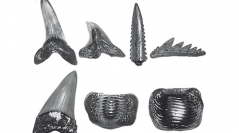

 Geodiversitas
35 (1) - Pages 67-103
Geodiversitas
35 (1) - Pages 67-103Two paleontological sites, La Guimardière and Pelmer, of the Miocene Basin of Savigné-sur-Lathan/Noyant-sous-le-Lude are described here. These sites are located northwest of Noyant-sous-le-Lude (Maine-et-Loire, France). The geological contexts of Pelmer and La Guimardière are distinct. The limestone substratum (Oligocene) can only be seen in the Pelmer site when the early Orleanian fluviatile sands may only be observed at La Guimardière. The thickness of the Middle to Late Miocene marins shelly fossils varies between Pelmer and La Guimardière. Between 1980 and 2003, both sites were exploited by amateur paleontologists. A collection of 2727 fossils of vertebrates were discovered. Currently, most of these fossils are stored in the paleontological collection of the “Musée du Savignéen” (Savigné-sur-Lathan, Indre-et-Loire, France). The geological and taphonomic contexts from Pelmer and La Guimardière have helped to create any fossil groups with the same age and the same conservation. The paleontological study reveals six distinct groups: a continental fauna in situ in the Early Orleanian fluviatile sands of La Guimardière (MN3a) ; a Middle to Late Miocene (MN5 to MN9) marine fauna, in situ or slightly reworked ; five clusters of reworked fossils (Upper Cretaceous-Miocene) in Miocene sands. These data confirm and complete the fossil groups already known in the literature.
Mammals, Miocene, France, Anjou, Touraine, biostratigraphy, shelly sands, faunal ssemblage, reworking, taphonomy